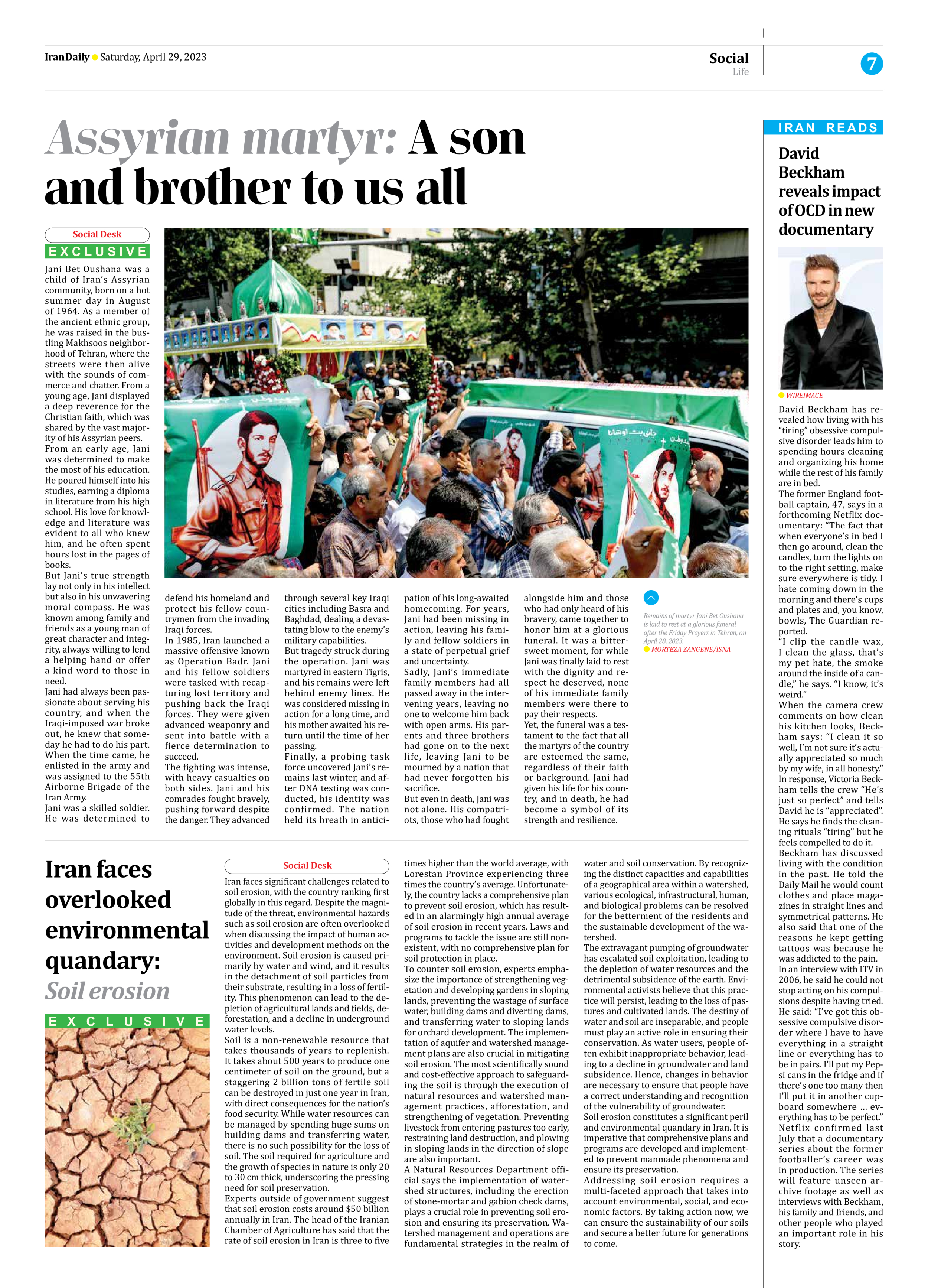
Iran faces overlooked environmental quandary: Soil erosion
Iran faces significant challenges related to soil erosion, with the country ranking first globally in this regard. Despite the magnitude of the threat, environmental hazards such as soil erosion are often overlooked when discussing the impact of human activities and development methods on the environment. Soil erosion is caused primarily by water and wind, and it results in the detachment of soil particles from their substrate, resulting in a loss of fertility. This phenomenon can lead to the depletion of agricultural lands and fields, deforestation, and a decline in underground water levels.
Soil is a non-renewable resource that takes thousands of years to replenish. It takes about 500 years to produce one centimeter of soil on the ground, but a staggering 2 billion tons of fertile soil can be destroyed in just one year in Iran, with direct consequences for the nation’s food security. While water resources can be managed by spending huge sums on building dams and transferring water, there is no such possibility for the loss of soil. The soil required for agriculture and the growth of species in nature is only 20 to 30 cm thick, underscoring the pressing need for soil preservation.
Experts outside of government suggest that soil erosion costs around $50 billion annually in Iran. The head of the Iranian Chamber of Agriculture has said that the rate of soil erosion in Iran is three to five times higher than the world average, with Lorestan Province experiencing three times the country’s average. Unfortunately, the country lacks a comprehensive plan to prevent soil erosion, which has resulted in an alarmingly high annual average of soil erosion in recent years. Laws and programs to tackle the issue are still nonexistent, with no comprehensive plan for soil protection in place.
To counter soil erosion, experts emphasize the importance of strengthening vegetation and developing gardens in sloping lands, preventing the wastage of surface water, building dams and diverting dams, and transferring water to sloping lands for orchard development. The implementation of aquifer and watershed management plans are also crucial in mitigating soil erosion. The most scientifically sound and cost-effective approach to safeguarding the soil is through the execution of natural resources and watershed management practices, afforestation, and strengthening of vegetation. Preventing livestock from entering pastures too early, restraining land destruction, and plowing in sloping lands in the direction of slope are also important.
A Natural Resources Department official says the implementation of watershed structures, including the erection of stone-mortar and gabion check dams, plays a crucial role in preventing soil erosion and ensuring its preservation. Watershed management and operations are fundamental strategies in the realm of water and soil conservation. By recognizing the distinct capacities and capabilities of a geographical area within a watershed, various ecological, infrastructural, human, and biological problems can be resolved for the betterment of the residents and the sustainable development of the watershed.
The extravagant pumping of groundwater has escalated soil exploitation, leading to the depletion of water resources and the detrimental subsidence of the earth. Environmental activists believe that this practice will persist, leading to the loss of pastures and cultivated lands. The destiny of water and soil are inseparable, and people must play an active role in ensuring their conservation. As water users, people often exhibit inappropriate behavior, leading to a decline in groundwater and land subsidence. Hence, changes in behavior are necessary to ensure that people have a correct understanding and recognition of the vulnerability of groundwater.
Soil erosion constitutes a significant peril and environmental quandary in Iran. It is imperative that comprehensive plans and programs are developed and implemented to prevent manmade phenomena and ensure its preservation.
Addressing soil erosion requires a multi-faceted approach that takes into account environmental, social, and economic factors. By taking action now, we can ensure the sustainability of our soils and secure a better future for generations to come.







